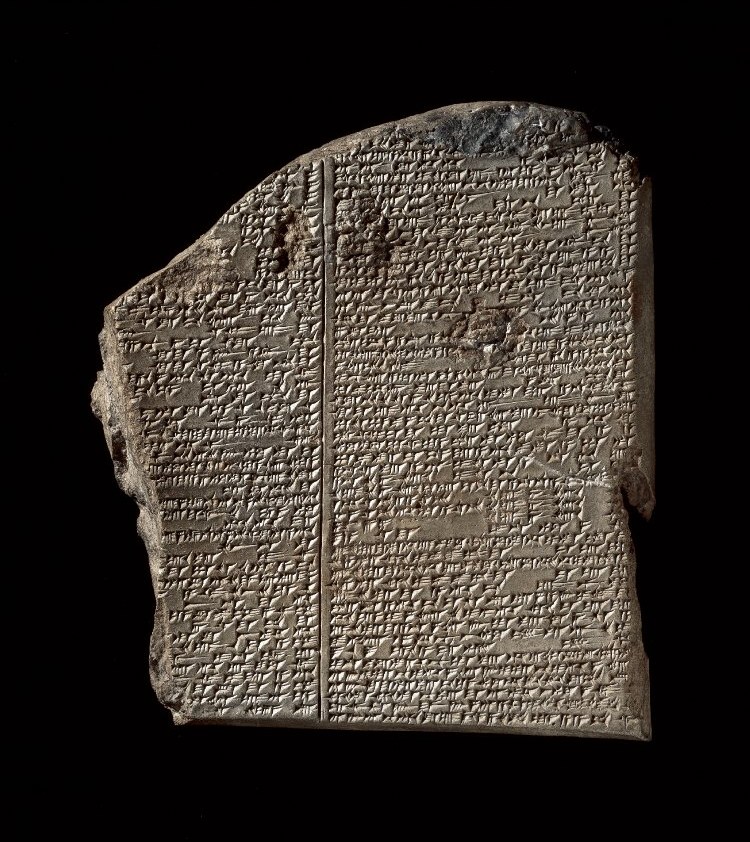Why? Because it depends on your definition of a garden. Penelope Hobhouse in Plants in Garden History says ‘The first western gardens were those in the Mediterranean basin. There in the desert areas stretching from North Africa to the valleys of the Euphrates, the so-called cradle of civilisation (the Fertile Crescent - my comment) where plants were first grown for crops by settled communities, garden enclosures were also constructed.'
Thus. if the definition of a garden is based on a matter of the scale of cultivation - gardening as supposed to agriculture - then the first gardens were the made by the Neolithic tribes people who gave up hunter gathering, domesticated wild cereals and adopted a sedentary, agrarian lifestyle. The oldest of such sites so far discovered by archaeologists is Tell Aswad in what is now Syria, where ‘the earliest systematic exploitation of domesticated cereals (emmer wheat) dates to c. 9000-8500 BC’.
However, I am not aware of archaeological evidence to support the claim of Neolithic ornamental gardens - if its there I would love to discover the source. But I am sure that domesticated plants would have been grown in a protected proto-garden, and as we all know an arrangement of plants grown for utility can simultaneoulsy have an ornamental value.
Thus. if the definition of a garden is based on a matter of the scale of cultivation - gardening as supposed to agriculture - then the first gardens were the made by the Neolithic tribes people who gave up hunter gathering, domesticated wild cereals and adopted a sedentary, agrarian lifestyle. The oldest of such sites so far discovered by archaeologists is Tell Aswad in what is now Syria, where ‘the earliest systematic exploitation of domesticated cereals (emmer wheat) dates to c. 9000-8500 BC’.
However, I am not aware of archaeological evidence to support the claim of Neolithic ornamental gardens - if its there I would love to discover the source. But I am sure that domesticated plants would have been grown in a protected proto-garden, and as we all know an arrangement of plants grown for utility can simultaneoulsy have an ornamental value.
If, on the other hand we are talking about ornamental gardenis, then the Sumerians (c.5000-2400 BC) had hunting parks which were used for recreation and pleasure, but were not gardens for a garden’s sake.
The Epic of Gilgamesh (which is supposed to be based on Sumerian legends and if Gilgamesh is an historic figure, his rule is dated to c.2500 BC) has, on Tablet Nine, mention of the 'garden of the gods' filled with jewel-laden trees. So maybe there were ornamental gardens in the great cities such as Uruk. I would have thought it likely, but sadly there is no surviving archaeological evidence.
There is however archaeological evidence for ornamental gardening from Ancient Egypt dating about 2,000 BC. This is in the form of carvings and model gardens included as tomb goods. By this date the gardens seem already quite advanced in their design and the Egyptians were certainly accomplished gardeners (in the cultivation-for-food sense). Later evidence in the form of tomb paintings (the best example is in Theban Tomb 96, the tomb of Sennufer - painting, artist's reconstruction) shows that the Egyptians, who dwelt in hot, arid and windy locations, designed gardens as an escape. Walled in to keep the elements out, a cool, shaded, well-watered space filled with garden kiosks, scented flowers, fruit laden trees and vine-clad pergolas.
And, as already mentioned in a post there is archaeological evidence from Crete that the Minoans may have made gardens - there are frescoes from the Villa of Amnisos and a possible rock garden at the Place of Phaistos, both dating to c.1500 BC.
And, as already mentioned in a post there is archaeological evidence from Crete that the Minoans may have made gardens - there are frescoes from the Villa of Amnisos and a possible rock garden at the Place of Phaistos, both dating to c.1500 BC.



No comments:
Post a Comment